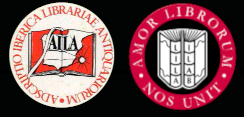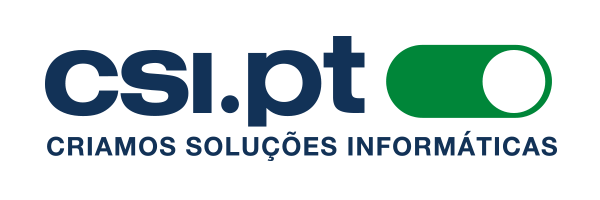


Home |
Temáticas |
Catálogos |
Pedidos |
  |  |
|||||||
|

|
RUGENDAS. (Johann Moritz) HABITANTE DE GOYAS, QUADRO A ÓLEO PINTADO SOBRE MADEIRA. |
|
|
Clique nas imagens para aumentar. OZANAM. (Jaques) DICTIONAIRE MATHEMATIQUE OU IDÉE GENERALE DES MATHEMATIQUES.DANS LEQUEL SONT CONTENUS LES TERMES de cette science, outre plusieurs termes des Arts & des autres sciences, avec des raisonnemens qui conduisent peu à peu l’esprit à une connoissance universelle des Mathematiques. Par M. OZANAM, Professeur des Mathematiques du Roy Tres-Chrétien à Paris. Sur l’Imprimé à Paris. A AMSTERDAM, Aux dépens des HUGUETAN. M. DC. LXXXXI. [1691]. In 8.º de 25x20 cm. Com [xiv], 739, [iii em br.] págs. Encadernação da época inteira de pele com nervos e ferros a ouro na lombada. Ilustrado em extratexto com um belo frontispício alegórico em face da folha de rosto, da autoria de Johannes van den Aveele. Contém vários símbolos que se relacionam com os temas abordados na obra, desde diversos instrumentos de medição e de observação, nomeadamente o compasso, o transferidor, o esquadro, o telescópio e o astrolábio; o pentagrama; anjos que brincam com um globo terrestre; um plano de uma praça-forte; um conjunto de arcos e outros elementos arquitectónicos, onde se encontra o título da obra; equipamento de artilharia; estrelas cadentes; etc., etc. Apresenta ainda 23 gravuras em metal com esquemas, figuras e problemas matemáticos, sendo uma delas desdobrável. Ao longo do texto encontram-se também diversas xilogravuras com pautas musicais, esquemas e figuras adicionais, que complementam as anteriores, facilitando a compreensão do texto e ilustrando os problemas abordados. Rosto impresso a vermelho e preto, com a marca do impressor, usada por Jean Antoine Huguetan e Guillaume Barbier, gravada em metal, com uma esfera armilar sustentada por uma mão que surge de entre as nuvens e com dois anjos que seguram uma fita com o mote: «Universitas rerum ut pulvis in manu Iehovae». Texto composto em caracteres redondos e alguns itálicos pequenos, sendo os problemas e teoremas apresentados em caracteres minúsculos. Inclui belos ornamentos gravados em madeira, nomeadamente: cabeções com motivos florais ao início do prefácio e na primeira página numerada, e outros mais simples, com vinhetas tipográficas, ao longo da obra; inicial decorada no prefácio; e belos florões de remate. Exemplar com falhas de pele junto à lombada e leves manchas de humidade ao longo do miolo. Inclui restauros sobre picos de traça ou falhas por humidade na margem inferior de algumas folhas, nomeadamente a partir da 617. Estes nunca atingem a mancha tipográfica. As folhas que contém as páginas 213 a 216 estão trocadas com as 209 a 212. As 385 a 392 constam em duplicado. Segunda edição. No mesmo ano foi publicada uma edição em Paris e dela foi feita uma edição fac-similada em 1982. Primeiras páginas não numeradas com prefácio do autor, índice de capítulos, índice de teoremas, corolários e problemas (que incidem maioritariamente nos campos da astronomia e das matemáticas puras) e catálogo do editor-livreiro Georgium Gallet (George Gallet). A partir da página 673 apresenta um extenso índice de matérias. Os seguintes temas são abordados: aritmética, álgebra, geometria, cosmografia, astronomia, geografia, náutica e marinha, óptica, mecânica, estática, hidrostática, arquitectura civil e militar e música. Vários dos temas abordados em astronomia baseiam-se na obra e observações de Giovanni Domenico Cassini. Jacques Ozanam (Sainte-Olive, 1640 – Paris, 1718) foi um matemático e popular escritor de livros didáticos. Inicialmente um estudante de teologia, acabaria por se dedicar inteiramente à matemática após a morte do pai, que o incitava aos caminhos religiosos. Fê-lo essencialmente de forma autodidata e acabou por se tornar um professor que dava aulas particulares a alunos estrangeiros em Paris. Embora não tenha sido um matemático de primeira linha, destacou-se pela divulgação da mesma e pelo professorado. Abraham de Moivre, um importante matemático conhecido pela fórmula de De Moivre e pelos seus avanços em teoria das probabilidades, foi seu aluno. Escritor prolífico, tanto na área da matemática pura como aplicada, segue parte da sua bibliografia: Table des sinus, tangentes, et sécantes(1670); Méthode générale pour tracer les cadrans (1673); La géométrie pratique du sr Boulenger (1684); Traité de la construction des équations pour la solution des problèmes indéterminez (1687); Traité des lieux géométriques (1687); Traité des lignes du premier genre (1687); De l’usage du compas de proportion (1688); Méthode de lever les plans et les cartes de terre et de mer (1691); Traité de la fortification régulière et irrégulière (1691); Méthode facile pour arpenter et mesurer toutes sortes de superficies (1699); La perspective théorique et practique (1711) e La géographie et cosmographie qui traite de la sphere (1711). Os seus livros obtiveram sucesso comercial, com várias edições impressas, sendo de destacar as obras: Dictionnaire mathématique (1691), Cours de mathématiques (1693) em cinco volumes e Récréations mathématiques et physiques (1694) em quatro volumes. É por esta última obra de matemática recreativa que Ozanam é geralmente reconhecido, (com pelo menos dez edições) precursora dos vários livros escritos nesta matéria durante o século XVIII e XIX. A matemática recreativa compõe-se de diversos puzzles e jogos que vão desde os mais ingénuos passatempos aos mais sofisticados problemas, que requerem, não raras vezes, o conhecimento de matemática avançada para a sua resolução, alguns dos quais nunca foram resolvidos. Johannes van den Aveele (Leiden, c. 1650 – Estocolmo, 1727). Pintor, gravador em chapa de cobre e ilustrador neerlandês do final do século XVII e início do século XVIII. A sua carreira pode ser dividida em dois períodos. Antes de 1698, exerceu a sua atividade no seu país de nascimento, após o que se mudou para a Suécia, onde trabalhou sobretudo em mapas topográficos. Durante o seu período 'holandês', Van den Aveele realizou várias ilustrações sequenciais que são interessantes para os historiadores como protótipos de banda desenhada. Entre elas contam-se uma reportagem gráfica do casamento (1677) e da coroação (1688) de William III e Mary Stuart, uma visualização da oração muçulmana (1681) e uma representação da violência católica contra os protestantes (1698).
Illustrated hors-texte with a beautiful allegorical frontispiece on the title page by Johannes van den Aveele. It contains various symbols that relate to the themes covered in the work, from various measuring and observation instruments, namely the compass, protractor, square, telescope and astrolabe; the pentagram; angels playing with a globe; a plan of a fortress; a set of arches and other architectural elements, where the title of the work can be found; artillery equipment; shooting stars; etc., etc. It also features 23 metal etched engravings with diagrams, figures and mathematical problems, one of which can be folded out. Throughout the text there are also several woodcuts with musical scores, diagrams and additional figures, which complement the previous ones, making the text easier to understand and illustrating the matters addressed. Title page printed in red and black, with the printer"s device used by Jean Antoine Huguetan and Guillaume Barbier, etched in metal plate, with an armillary sphere supported by a hand emerging from among the clouds and two angels holding a ribbon with the motto: «Universitas rerum ut pulvis in manu Iehovae». The text is printed in round characters and some small italics, and the problems and theorems are presented in tiny characters. It includes beautiful woodcut ornaments, namely: headpieces with floral motifs at the beginning of the preface and on the first numbered page, and simpler ones, with typographic vignettes, throughout the work; decorated initial on the preface; and beautiful finishing fleurons. Copy with leather flaws near the spine and slight damp stains along the hinges. Some restorations on moth holes or humidity flaws on the lower margin of some pages, namely from page 617 onwards. These never reach the text area. Pages 213 to 216 are interchanged with pages 209 to 212. Pages 385 to 392 are duplicated. Second edition. In the same year an edition was published in Paris and a facsimile edition was made in 1982. First unnumbered pages with the author"s preface, chapter index, index of theorems, corollaries and problems (mostly in the fields of astronomy and pure mathematics) and catalogue of the publisher-bookseller Georgium Gallet (George Gallet). From page 673 onwards there is an extensive subject index. The following subjects are covered: arithmetic, algebra, geometry, cosmography, astronomy, geography, nautical and marine, optics, mechanics, statics, hydrostatics, civil and military architecture and music. Several of the topics covered in astronomy are based on the work and observations of Giovanni Domenico Cassini. Jacques Ozanam (Sainte-Olive, 1640 - Paris, 1718) was a mathematician and popular textbook writer. Initially a theology student, he ended up devoting himself entirely to maths after the death of his father, who urged him to follow religious paths. He did this essentially self-taught and ended up becoming a teacher who gave private lessons to foreign students in Paris. Although he wasn"t a top mathematician, he stood out for his dissemination of maths and his teaching. Abraham de Moivre, an important mathematician known for his De Moivre"s formula and for his advances in probability theory, was his pupil. A prolific writer in both pure and applied maths, here is part of his bibliography: Table des sinus, tangentes, et sécantes(1670); Méthode générale pour tracer les cadrans (1673); La géométrie pratique du sr Boulenger (1684); Traité de la construction des équations pour la solution des problèmes indéterminez (1687); Traité des lieux géométriques (1687); Traité des lignes du premier genre (1687); De l’usage du compas de proportion (1688); Méthode de lever les plans et les cartes de terre et de mer (1691); Traité de la fortification régulière et irrégulière (1691); Méthode facile pour arpenter et mesurer toutes sortes de superficies (1699); La perspective théorique et practique (1711) and La géographie et cosmographie qui traite de la sphere (1711). His books were commercially successful, with several editions in print: Dictionnaire mathématique (1691); Cours de mathématiques (1693) in 5 volumes and Récréations mathématiques et physiques (1694) in 4 volumes. It is for this last work on recreational mathematics that Ozanam is generally recognised, (with at least ten editions) the forerunner of the various books written on this subject during the 18th and 19th centuries. Recreational maths is made up of various puzzles and games that range from the most naive pastimes to the most sophisticated problems, which often require knowledge of advanced maths to solve, some of which have never been solved. Johannes van den Aveele (Leiden, c. 1650 - Stockholm, 1727). Dutch painter, copperplate engraver and illustrator of the late 17th and early 18th centuries. His career can be divided into two periods. Before 1698, he worked in his country of birth, after which he moved to Sweden, where he worked mainly on topographical maps. During his 'Dutch' period, Van den Aveele produced several sequential illustrations that are of interest to historians as prototypes for comic strips. These include a graphic report of the wedding (1677) and coronation (1688) of William III and Mary Stuart, a visualisation of Muslim prayer (1681) and a depiction of Catholic violence against Protestants (1698). Referências/References: BNF: ark:/12148/cb384963218 + ark:/12148/cb34000039z MacTutor - University of St. Andrews, biografia de J. J. O’Connor e E. F. Robertson. SBN [Servizio Bibliotecario Nazionale] - ITICCUCFIE Lambiek Comiclopedia, entry by Kjell Knudde Referência: 2307SB001
Local: M-6-D-13 Caixa de sugestões A sua opinião é importante para nós. Se encontrou um preço incorrecto, um erro ou um problema técnico nesta página, por favor avise-nos. 
|
Pesquisa Simples




|
||
 |
|||
|